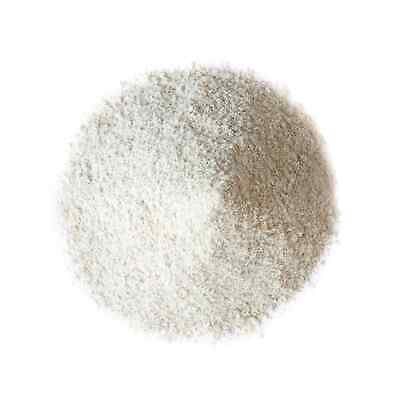-40%
Rye Flour - Stone Ground from Whole Grain Rye Berries, Kosher, Vegan, Bulk
$ 3.16
- Description
- Size Guide
Description
Rye flourNon-GMO Verified
Certified
Kosher
by
Union of Orthodox Jewish Congregations of America
Suitable for Vegetarians
Suitable for Vegans
About the product:
DIETARY PRODUCT: Fewer carbs and rich in nutrients, vitamins, and fiber compared to wheat flour.
UNIVERSAL IN COOKING: Bake bread, cookies, pancakes, and other tasty goods for your family.
UNIQUE TASTE: The taste of rye flour is nutty and pleasantly bitter.
MIX IT WITH OTHER FLOURS: For a good taste and a nice texture of your bread, mix rye flour with wheat flour.
Product Description:
Why Rye flour?
Rye is a family of wheat, but it is a much healthier alternative. Whole-grain rye flour contains the highest amount of bran. Therefore it's rich in proteins, vitamins, potassium, iron, and magnesium.
Rye flour is popularly used in diets for people with diabetes since the rye's carbohydrates are brake down gradually and, therefore, prevent blood glucose levels from rising quickly. Rye contains many proteins and amino acids, so even athletes can benefit from it in their diet.
How does it taste and how can you use it
Rye flour possesses a unique taste and color. The taste is slightly bitter and nutty, which is surprising for those who like wheat bread.
Another quality of rye flour is its ability to become brown when baked. That is why the crumb of rye bread is always dark.
For a long time, whole rye flour was only for industrial baking of bread. However, nowadays, it is becoming more common, and the number of recipes with rye flour continuously grows. You can make cookies, pancakes, pies, tortillas, and other goodies from it. Different mixing proportions - different properties of your bread.
Because bread flour possesses different characteristics than wheat flour, it is rarely used as a substitute. Instead, bakers use it to make a flour mix. Here are some examples of bread with the use of different proportions of rye and wheat flours:
The bread that has up to 40% rye flour, commonly referred to as "rye bread." Rye flour is in a reasonably large proportion here; therefore, there is a distinct rye flavor.
Bread with more than 50% rye flour is entirely different. All the unique characteristics of rye and wheat's chemical differences become more important as the proportion of rye in the dough increases. Typically this bread is flatter and should be allowed to rest for a few hours after baking to prevent crusting.
When there is 70% rye or more, the bread may need to rest for 24 hours, even up to several days, before slicing.
















